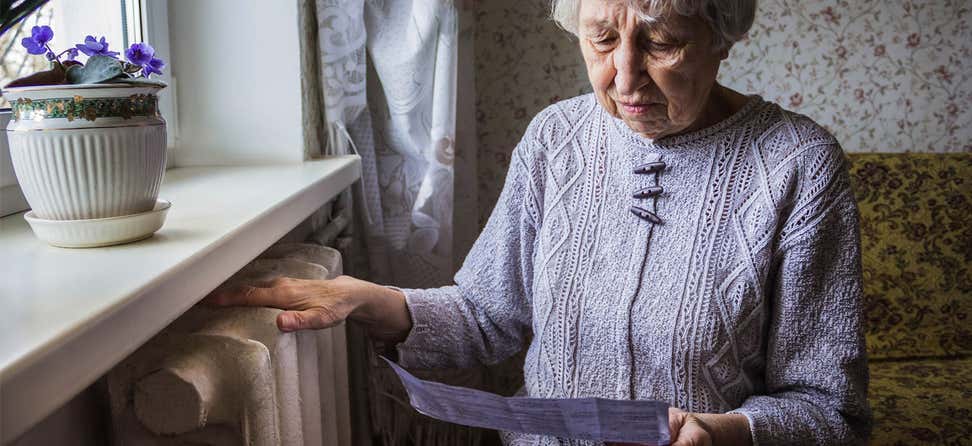Is your home well-protected against very hot and very cold temperatures, sun, high winds, and heavy rain? If not, it can affect your comfort and health, and cost you more money. That's where weatherization (weather proofing) comes in. Whether you live in Texas or Vermont, you should know why weatherization matters and how to get help protecting your home.
What is weatherization? What does it mean to weatherize a home?
Weatherizing involves making improvements and repairs to a home to help make it more energy efficient (meaning, it uses less energy to get the job done—like heating your home). This process may include, for example:
- Installing energy-efficient light bulbs
- Insulating the walls and attic
- Replacing broken window glass
- Tuning and repairing heating systems
Why is weatherization important?
Weatherizing offers many benefits. One of these is saving homeowners 20-30% on energy bills (especially in cold-weather areas).1 In fact, home weatherization has been shown to help people save an average of $283 each year.2
Weatherization also helps prevent expensive (and sometimes dangerous) damage to a home from water, moisture, and sunlight. Other reasons to weatherize include:
- Higher home value
- Better indoor air quality
- Improved sleep
- Lower risk of danger/injury
- Good for the environment
Can I get help with weatherizing my home?
Many people on a tight budget have trouble paying their energy bills. If you need help affording your home heating and cooling costs, you may qualify for the Weatherization Assistance Program.
What is the Weatherization Assistance Program?
The Weatherization Assistance Program (WAP) helps people with low income reduce their energy costs by improving their home’s energy performance (at no cost to them). This program provides weatherization services to about 35,000 homes every year across all 50 U.S. states, the District of Columbia, Native American tribes, and the five U.S. territories.2 These services are 100% free for those who meet the guidelines.
Who qualifies for weatherization assistance?
WAP is open to homeowners, renters, and mobile-home owners. Your income is one of the main things that decides if you can get WAP benefits. Households that fall at or below 200% of the poverty income guidelines can get weatherization assistance if they receive Supplemental Security Income (SSI) or Aid to Families with Dependent Children.
Those most likely to get help from WAP include:
- Older adults age 60+
- Households with one or more members with a disability
- Households with children, in most states
- High-energy users
Also, each state may have its own additional guidelines.
How to apply for weatherization assistance
Each state has its own process to apply for weatherization assistance. In general, you must follow these steps:
- Find your local WAP agency and submit an application: Choose your state, tribe, or territory on this map to review the guidelines. If you meet them, follow the directions on your state's website for how to apply. Your WAP agency will tell you if you’re approved for aid after they receive your application and proof of income (such as pay stubs). Note: In some states, like New Hampshire, the Low Income Home Energy Assistance Program (LIHEAP) application is also used to apply for weatherization assistance. Just remember to check “yes” on the question that asks, “Are you interested in receiving weatherization services?” Some states may require you to apply and get approval for LIHEAP benefits before applying for the Weatherization Assistance Program.
- Have a free energy audit done at your home: If you're approved for weatherization services, you’ll receive a date for an energy audit (review). During this appointment, an energy auditor will walk through your home to see how energy efficient it is. They will point out problem areas such as drafty windows, and safety issues like mold. This will help them figure out the best energy-saving solutions for your home. The auditor will then help you schedule your weatherization services for a day and time that work for you.
- Prepare your home for weatherization: Get ready for the crew’s arrival by locking up your pets, removing clutter from main areas and walkways, and making sure your attic and basement are open. If you rent, you must get permission from your landlord before receiving any weatherization services.
Sources
Top Five Reasons You Should Care About Weatherization, National Association for State Community Services Programs. Found on the internet at https://nascsp.org/top-five-reasons-you-should-care-about-weatherization/
Weatherization Works! U.S. Department of Energy Office of Energy Efficiency & Renewable Energy. Found on the internet at https://www.energy.gov/sites/prod/files/2018/03/f49/WAP-fact-sheet_final.pdf
 Share to Facebook
Share to Facebook  Share to X
Share to X  Share to LinkedIn
Share to LinkedIn  Share to Email
Share to Email 